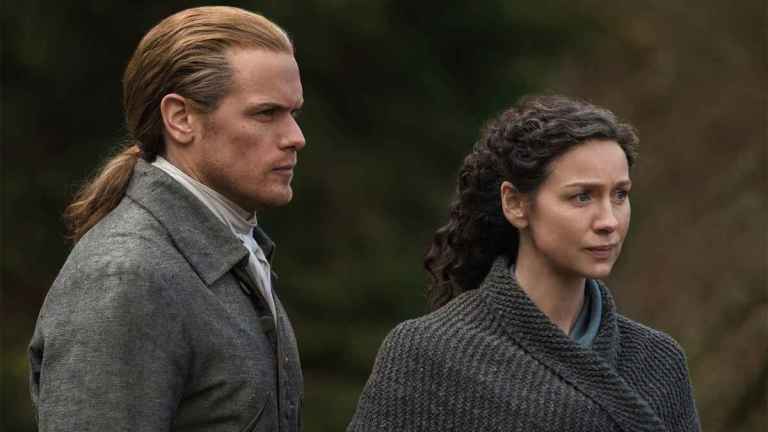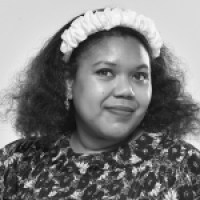Outlander Season 6: Freemasons and Ether History Explained
The Outlander Season 6 premiere introduces story characters and themes that have not previously featured in the book series.

This article contains Outlander Season 6 spoilers
Tom Christie doesn’t just bring his family to Fraiser’s Ridge. He brings beef from Ardsmuir prison and controversial religious ideas. Alongside this, Claire is continuing to experiment with 18th Century replacements for modern remedies and techniques. This episode introduces Claire experimenting with ether, but what is the historical significance of both?
Though the premiere rightfully excluded tangential details about religion and politics in the 18th Century in order to focus on the fictional story, there are a few pieces of historical context about the Freemasons that may help Outlander fans better understand the episode.
The Freemasons were a fraternal organization devoted to mutual respect, belief in a supreme being, and the craft of masonry or modern-day architecture. There were rules at the time that members must be “free men” who were able to participate in society as citizens. Technically Jamie and the other men were all in prison so their lodge wasn’t in compliance. (Speaking of free men, African-Americans formed their own Freemason organizations as they were banned from joining the white-dominated lodges).
However, it should be pointed out that Scottish Freemasons had a different structural hierarchy than their English counterparts. This book and others written by the author will have more details about how a real Scottish lodge would have operated. The episode also did not go into a lot of detail about the beliefs of Freemasons or the organizational hierarchy.
Freemasonry during the 18th Century attracted men (women were banned from joining) from all walks of life. Some were interested in the ideals of the organization while others were looking for social connections or advancing in society. Another appealing reason for joining the Freemasons was that discussions of politics and religion were banned at meetings. While this doesn’t bode well for religious zealots like Tom Christie, the organization at the time served as a meeting place for men who believed in religious freedom and/or cooperation between people with differing opinions.
This may sound very modern to some viewers, but the 18th Century was known as the Age of Enlightenment where new ideas on religion and philosophy were published and disseminated. The Freemasons were one of many groups that were influenced by this cultural movement. Jamie would have definitely read the Scottish intellectuals and even some English philosophers active in codifying new ideas.
Since this season of Outlander is focused on portraying America before the Revolutionary War, freedom of religion was one of the many issues the colonists had with royal control. The Crown often imposed membership in the Church of England as a condition for being appointed to government positions. Many people settled in America because they were looking to get away from sectarian conflicts and persecution in England and Europe. The failed Scottish rebellion Jamie and Tom Christie participated in can also be classified as a sectarian conflict as the Stuarts were Catholics opposed to the Church of England.
Freemasonry became popular in the American colonies because it was an alternative to sectarianism. George Washington and several other eventual leaders of the American Revolution were Freemasons. Although historians have been debating for years how much Freemasonry directly influenced the founding of America, it is clear that the First Amendment of the Constitution guaranteeing freedom of religion and association were concepts that were influenced by the Age of Enlightenment.
Scientific research and in turn medical advancements are another part of the Age of Enlightenment. Ether, known to scientists as diethyl ether, was one of the first drugs used for general anaesthesia. August Sigmund Frobenius published an account of synthesizing ether in 1730. Claire’s experiments in the era were rare as ether wasn’t widely used in America until the 1840’s, but she needed a substance that she could make in the surgery to replace modern anaesthetic drugs.
Claire not only uses ether for her patients, but she also uses it to take the edge off of her PTSD. Liquid ether was commonly advertised as an alternative to alcohol in the 19th Century for recreational use. Closer to Outlander’s era, Tolstoy in War and Peace mentions Hoffman’s Drops, a form of liquid ether. Many people at the time would have used laudanum, extracted from opium as a painkiller or for dulling the senses.
Outlander Season 6 is continuing the tradition of tying into the story real historical events and concepts. Some of these were already featured in the novels, while others are primarily in the episode scripts. Freemasonry and ether may not reappear in future episodes this season but it’s important for fans to know the history behind what appears on the screen.
